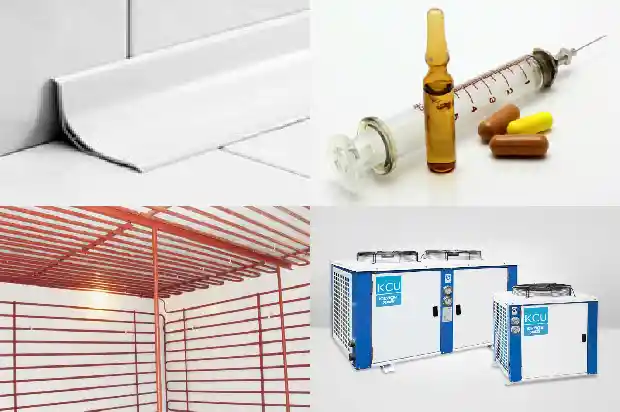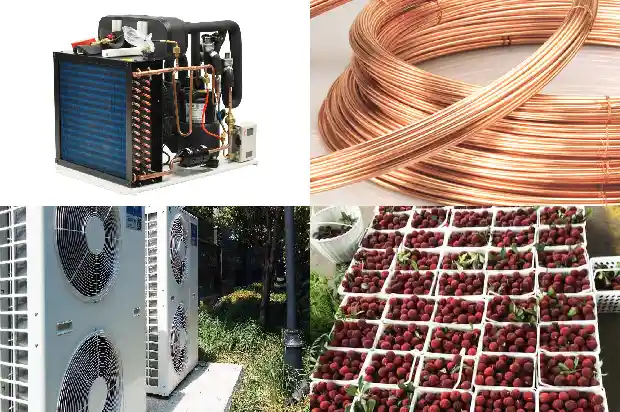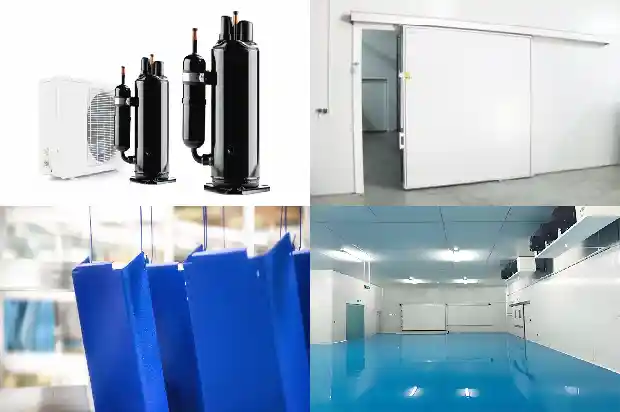Elastocaloric refrigeration: A new type of solid-state refrigeration technology
2024-11-17
At the New Technology Conference on Refrigeration and Air Conditioning, Professor Qian Suxin introduced a solid-state refrigeration technology called elastocaloric refrigeration that has emerged in recent years. In the report, Professor Qian first focused on the basic characteristics of elastocaloric refrigeration, including the elastocaloric effect at the material level and its working principle at the system level. Secondly, he introduced the current development status of this technology. Finally, combining his own years of experience in this field, Professor Qian shared some of his thoughts on the future development of this technology. The following is the content of Professor Qian's speech:
Why are people interested in elastocaloric refrigeration technology? We are all familiar with the development history of refrigerants in vapor compression refrigeration systems. Early refrigerants were mainly natural substances. In the early last century, chlorofluorocarbon (CFC) refrigerants were discovered. They had outstanding thermodynamic properties, were non-toxic and non-flammable, and were widely used in air conditioners and refrigeration equipment. However, both CFCs and their substitute hydrochlorofluorocarbon (HCFC) refrigerants led to the ozone layer crisis and have been restricted in use by the Montreal Protocol. Although the current hydrofluorocarbon (HFC) refrigerants have no ozone depletion effect, they have a very high greenhouse gas effect. A latest study by NASA shows that HFCs also have a certain ozone depletion effect. Therefore, people have started to legislate to gradually reduce the use of HFC refrigerants. Developed countries have agreed to reduce 85% of HFC refrigerants by 2036. Therefore, in the next two decades, most of the refrigerants in air conditioners and refrigeration equipment will need substitute products, which may be hydrofluoroolefins (HFO) or their mixtures, or natural substances such as propane (R290).

These non-vapor compression refrigeration technologies can be divided into several categories. The elastocaloric refrigeration technology we are introducing today belongs to the category of solid-state refrigeration technologies. A more familiar technology similar to it is magnetic refrigeration. China's Haier Company, the United States Aerospace Corporation and the European CoolTech Company all have commercial magnetic refrigeration products. Elastocaloric refrigeration is a new technology developed in recent years. Now let's start to introduce the basic principle of this technology.
Elastocaloric refrigeration corresponds to the word formation of its English term. As the name implies, it is based on the refrigeration effect brought about by the conversion between thermal energy and mechanical work derived from elastic potential energy. Since the last century, it has been found in various shape memory alloys that applying external force can lead to significant changes in the temperature of materials, showing a thermal effect. Based on a large number of experimental observations, the University of Bristol in the UK first proposed a thermodynamic refrigeration cycle utilizing this thermal effect. After a series of studies and attempts, the University of Maryland in the United States released the world's first refrigerator utilizing the elastocaloric effect of shape memory alloys in 2015. It is worth mentioning that the temperature change observed in shape memory alloys can exceed 20K, which is much larger than that observed in magnetocaloric materials.

The elastocaloric effect mentioned just now is very similar to the gas-liquid phase change we are familiar with. In a gas-liquid two-phase system, when we use a compressor to apply pressure on the gas higher than its saturation pressure, the gaseous working fluid will condense and change into a liquid while releasing latent heat. Similarly, in the shape memory alloys we just mentioned, there are two solid states, one is the martensitic state and the other is the austenitic state. When we apply an external force exceeding its phase transformation stress to the austenite, the austenite undergoes a phase transformation into martensite while releasing latent heat, causing its own temperature to rise. When we remove the force, the martensite changes back to austenite, absorbing heat during the reverse phase transformation, which corresponds to the refrigeration process. This is the elastocaloric refrigeration effect. In the laboratory, we can observe the temperature change delta T of the material itself by applying an axial external force to the sample.
The solid phase of ordinary materials is just a curved surface, while in shape memory alloys, the solid phase is more complex. There are two additional two-phase interfaces, on which the processes of applying stress to release heat and removing stress to absorb heat can be drawn respectively. The essential reason for the existence of these two two-phase interfaces is the irreversible factors in the phase transformation process. At the same time, a larger stress is required to drive the phase transformation and a smaller stress is needed to restore the initial phase at the same temperature.

The shape memory alloy with the characteristic of two-phase phase transformation hysteresis is the solid refrigerant in the elastocaloric refrigeration system. Similar to the evaluation of conventional refrigerants, from an engineering perspective, the performance of shape memory alloys also needs to be comprehensively evaluated, including the energy density that determines the refrigeration capacity per unit mass or volume of the material, the coefficient of performance (COP) of the material, the service life that reflects the sustainable utilization time of the material, the magnitude of the driving field strength that determines the size of the driving device for the material and the complexity of the system design, and the cost that ultimately determines whether the technology can be quickly accepted by the market. It can be seen that compared with other solid-state refrigeration technologies, the most significant advantages of elastocaloric materials are their relatively high energy density and low cost, although their service life still needs to be improved.
Having a solid refrigerant is just the first step in realizing a refrigerator. The most important component in the system is the driving device, whose function is similar to that of the compressor in the vapor compression refrigeration system. We all know that the core of describing thermal engineering equipment is the equation of the first law of thermodynamics. When the power consumption is similar, we can compare the generalized displacements (i.e., specific volume change and material deformation) of the two refrigeration technologies, and the difference between them is 50 times. As a result, the gas compressors generally have relatively low pressure, while the pressure of shape memory alloys is relatively high. Therefore, elastocaloric refrigeration requires the development of a "compressor" with the characteristics of small displacement and large pressure. This is the second essential difference between elastocaloric refrigeration technology and vapor compression refrigeration technology.
After being able to drive the phase transformation of the refrigerant, the most important step is how to transfer heat and cold from the solid working fluid to the places where refrigeration and heating are needed, which involves the design of the thermodynamic cycle and the system process. Two sets of shape memory alloys are used to ensure that the system can supply cold continuously. At the beginning of the cycle, the first set of shape memory alloys is subjected to an external force, undergoes a phase transformation, releases latent heat, and its temperature rises. The second set of shape memory alloys is unloaded, absorbs latent heat, and its temperature drops. Then, two controllable heat transfer fluids are used. The red loop cools the first set of shape memory alloys and releases heat to the heat sink, similar to the outdoor condenser of an air conditioner. The blue loop brings cold to the space that needs refrigeration while heating the shape memory alloys. After that, we can further utilize the remaining temperature difference between the two sets of shape memory alloys to drive a regenerative process to achieve the purpose of further precooling the first set of shape memory alloys and preheating the second set of shape memory alloys. Regeneration can effectively increase the temperature difference of the system and improve the COP of the system. In general, due to the use of solid working fluid, we need to design a heat exchange fluid network that satisfies the above functions to realize the designed thermodynamic cycle, which is the main difference from the traditional direct heat transfer using refrigerants themselves.
Through the above introduction, an elastocaloric refrigeration system should have "three major components": solid shape memory alloys with two-phase separation hysteresis characteristics, a driving device with the characteristics of "large pressure and small displacement", and a controllable heat exchange fluid network containing a heat source heat exchanger and a heat sink heat exchanger.

After introducing the basic principle of elastocaloric refrigeration, next we will talk about the current development status of elastocaloric refrigeration technology through two examples. The first example is a project I participated in funded by the U.S. Department of Energy. We designed and built and tested the world's first elastocaloric refrigeration prototype. We adopted the technical route of compressing shape memory alloy pipes. The advantage of pipes is that the heat exchange fluid can flow inside the pipes for heat exchange. Our design was to axially compress and drive the phase transformation of the pipes. Therefore, we also needed to solve the problem of pipe buckling deformation by adding peripheral constraints. We designed a device that could evenly distribute the fluid and achieved high-precision positioning through linear bearings to reduce internal friction in the system. For the convenience of testing, we used tube-fin heat sinks and electric heating heat sources in the heat exchange fluid network, and the system was driven by mechanical devices.
We had two sets of shape memory alloy beds, and the mechanical driving device could move back and forth to load and unload these two sets of shape memory alloys respectively. The length was about two meters.
In order to verify whether the previously mentioned thermodynamic cycle design could work, we conducted a comparative experiment in the system. First, we turned off the driving device and only opened and closed the valves and water pumps periodically according to the design, and observed the temperature change laws of the water on both sides of the heat sink and the heat source. We found that their temperatures were basically the same. Then we turned on the driving device. According to our design, in each cycle, the shape memory alloys released heat to the heat sink, causing the temperature of the heat sink to rise, and absorbed heat from the heat source, causing the temperature of the heat source to drop, generating an observable system temperature difference, which proved that the design of our refrigeration system was successful.
During normal operation, the system will enter a periodic steady-state stage. It can be seen that the initial temperature jump in each cycle is caused by the adiabatic loading and unloading phase transformation, followed by the heat transfer and regeneration links. Comparing the experimental results with the simulation results, the trends of the two are basically the same, so it can be considered that the dynamic model reflects the actual thermophysical process well.
We also carried out a series of improvement tests. First, we analyzed and found the places that might cause internal friction in the system and reduced the friction loss by methods such as adjustment and straightening. Secondly, we introduced plastic conduits to reduce the fluid heat transfer loss in the fluid distributor. Thirdly, we used a gearbox to further increase the output torque of the driving motor to load more shape memory alloys and increase the refrigeration capacity of the system. Finally, we reduced the fluid retention mass in the pipes to reduce the system loss caused by the useless fluid thermal mass.
Furthermore, we analyzed the loss of the heat transfer fluid network. By comparing the average power measured on the heat source side and the shape memory alloy side, the heat source is the heat exchanger that actually provides refrigeration we mentioned before, similar to the indoor heat exchanger of an air conditioner. We can find that under various working conditions, the refrigeration capacity obtained on the heat source side is always 10 - 20W lower than that taken away from the shape memory alloys. Further quantitative analysis shows that the heat generated by the water pump is about 12W, the heat conduction between the fluid distributor and the shape memory alloys accounts for about 8W, and another part of the heat is dissipated into the air through the pipelines.
To sum up, the prototype of the University of Maryland achieved a system temperature difference of 4.7K and a maximum refrigeration capacity of 65W. After considering the 20W heat transfer fluid network loss mentioned above, an estimated refrigeration capacity of 85W and a system temperature difference of 6.1K can be obtained.
The second example is a small demonstration machine designed by the Karlsruhe Institute of Technology (KIT) in Germany. It adopted a design of solid-solid contact heat exchange without any heat transfer fluid. The driving motor was responsible for periodically moving the shape memory alloys to drive their shape changes, that is, to cause phase transformations. In the single shape memory alloy (SMA) design mentioned above, when the shape memory alloy deforms, heat is released during the forward phase transformation and transferred to the solid heat sink. When it recovers its original shape, it absorbs heat and refrigerates the solid heat source. In the dual SMA design, when the shape memory alloy deforms, heat is transferred to the air. When it changes back to its original shape, it absorbs heat from the solid heat sources on both sides for refrigeration.
The test results using an infrared camera showed that when the single SMA design was adopted, the system could achieve a maximum temperature difference of 7.3K. However, when the dual SMA design was adopted, no effective system temperature difference was measured. This was mainly because the heat exchange amount between the metal and the air was very limited. When the operation frequency was 0.66Hz, the heat released could not be dissipated into the air at all. Therefore, the still-hot shape memory alloy could not reach an effective refrigeration temperature when it was unloaded, resulting in the failure of this design to operate successfully.
We have just introduced two examples. Currently, many research institutions in the United States, Germany, and Denmark are participating in government-funded research projects on elastocaloric refrigerators. There are even more research projects at the material level that are not listed here. Generally speaking, since this technology is still in its infancy, the main source of funds is still the governments of various countries.
Next, we will briefly introduce the future development of elastocaloric refrigeration technology. In the previous introduction, we mainly focused on the size of the system temperature difference. From a product perspective, requirements in terms of refrigeration capacity, temperature difference, and COP need to be met. In the long run, the system efficiency COP must reach a level similar to or even higher than that of vapor compression technology to have application value. Therefore, the following analysis will mainly be carried out from the perspective of COP.
We propose to use the thermodynamic perfection degree, that is, the ratio of the COP to the COP of the Carnot cycle, as an indicator to evaluate the performance of the system.
According to the results of loss analysis, it can be seen that in order to improve the COP of the system, the main problems that elastocaloric refrigeration technology needs to solve are reducing the irreversible losses of materials, reducing adiabatic loading losses, and reducing heat transfer and alternating losses. Of course, optimizing the structural design of the system is also one of the main ways to improve the COP of the system.
Related Articles
- Have You Encountered the Three Common Problems of Refrigeration Compressors?
- How to Calculate Refrigeration Load? And What Are the Issues?
- What to Do if the Compressor of a Frozen and Refrigerated Display Cabinet Runs but the Refrigeration Effect Is Poor?
- Instructions for Welding and Drainage in the Installation of Refrigeration Equipment Pipelines
- Common Pressure Valves and Protection Devices in Refrigeration Units
- Precautions for Using Rotary Refrigeration Compressors
- What Misconceptions Should Be Avoided in Low - temperature Refrigeration System Repairs
- Essential for Maintenance! Parameters and Phenomena of Normal Operation of Refrigeration and Heating Systems
- Composition and Common Faults of Screw Refrigeration Compressors
- How to Read the High - and Low - Pressure Gauges of Refrigeration Air - conditioners?
- What is Cascade Refrigeration?
- Introduction to Control Valves in Refrigeration Systems
- Welding Equipment Used in Refrigeration System Maintenance
- Where Lie the Key Construction Technologies of the Ammonia Refrigeration System?
- What to Do When a Refrigeration Unit Malfunctions?
- Could a Tiny Copper Tube Cause a Multi - split Air Conditioner to Stop Cooling? Refrigeration Workers Must Pay Attention!
- Has Your Refrigeration System Experienced "Oil Carry - over"?
- Basic Knowledge of Valve - type Components in Refrigeration Systems (Technical Sharing)
